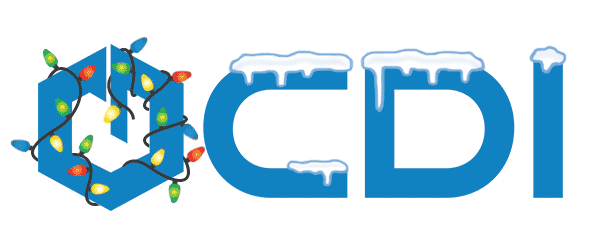Hopping Around Too Much in Laserfiche? Let Shortcuts Help
- CDI
- Apr 29, 2024
- 4 min read

By Kyle Knebel
April 2024 Consultants Corner
In the Laserfiche Windows client and Web client, Laserfiche supports the use of Shortcuts and Starred entries. This gives you quick access to folders or documents that might be otherwise buried in a deep folder structure. Using shortcuts is your best bet when aiming for efficient use of your time.
Let’s take a look!
Scenario 1:
Creating shortcuts on your desktop of your PC and Favorites in the web browser makes the folder structure easier to access and file documents.
Did you know that when using the Laserfiche Windows client, you can drag a drop a folder shortcut onto your Windows desktop, such that clicking on it will launch Laserfiche and take you to that entry?
Here’s how:
Find a folder that you want to have as a link on your Desktop. Click and drag it out of the repository, onto the Desktop. A shortcut will appear. It will have a “. lfe” extension on the name, as shown in the image below.

For those using the Laserfiche Web Client, bookmarks can be made to link to any folder or document in the repository.
Here’s how:
Navigate to your selected entry, then use your browser’s “Save as Bookmark” feature. For most browsers, the keyboard combination CTRL+D will create the bookmark, allowing you to rename it and place it in a list or Toolbar. Google Chrome has the “star” icon on the URL bar, allowing you to create the bookmark as well.
The bookmark links to the repository and EntryID of the bookmarked entry. In the example image below, the folder link is connected to the folder with entry ID=26211.

You can edit the bookmark name and browser folder location to your preferences, using the browser’s “Manage Bookmarks” feature. Consult your browser’s help file if you need additional help.

Scenario 2:
Creating shortcuts within the repository.
Within the Laserfiche Windows client or Web client, you can create shortcuts. This method is beneficial because it can provide access to a document or folder buried in a nested subfolder structure without having the parent folder access. We sometimes refer to this as “tunneling.” Note: This tunnel method does require some additional security settings, which are outside the scope of this article.
To create a shortcut in the Windows client, right-click on the entry and choose “Copy.”

Navigate to the folder where you want to drop the shortcut and click “Paste Shortcut.”

To create a shortcut in the Web Client, right-click on the entry you want to make into a shortcut and choose “Move or Copy.”

Next, select the “Copy shortcut” option, as highlighted in the image below, and then use the blue hyperlinked folder path to navigate to your target folder. The path you see in blue is where the shortcut will be made.

Finally, click the “Paste” button to create the shortcut.

Scenario 3:
Using Workflow to create shortcuts to a personalized subfolder structure.
A Laserfiche Workflow can make folder shortcuts for us, creating a more organized, consistent set of links. For example, if you had several project folders, but wanted them visible in your personal folder, a workflow could do this automatically.
The activity to be used in Laserfiche Workflow could either be the “Route Entry to Folder” activity or the “Move Entry” activity. Both have a copy option.

Below is an example image of some project folders being created within a folder. Folder names can be created using all sorts of dynamically created names, based on metadata or other information within Laserfiche.

Scenario 4:
“Transparent Records Management” allows users to use traditional record series and yet still have an organized subfolder structure with mixed record series.
For those Laserfiche environments using Laserfiche’s Records Series instead of the newer concept of “Flexible Records Management,” the use of shortcuts pointing back to a Records Series, or a Records Folder, is quite useful.
Best Practice for “Transparent Records Management”, also known as “TRM”, is to utilize Laserfiche Workflows to build the shortcuts that link back to the Records Folders or Records Series. However, you can manually create your shortcuts, as I mentioned above in Scenario 2.
For those using Laserfiche’s Records Management edition, you may be filing document records that have different retention periods, even though they all relate to one individual, or one project. To see the documents in a single normal folder structure, instead of in several records folders, we can use shortcuts.
In the example below, there are two different folders for Jane Doe, but they also have different life-cycles. In other words, documents in one of the series need to be retained only for 6 years, but other documents in the second series are retained for the life of the company. Both files need to be accessible by staff who are not necessarily going to view the “Records Series” structure, and therefore need another way to see the folders and documents they need, all in a single folder.
We can see that shortcuts are found in the “_TRM – Doe, Jane” folder, even though they really exist in a different area.

This concludes this month’s review of a few Laserfiche shortcut methods. With so many options for the use of shortcuts, even the Easter bunny can easily hop to a Laserfiche folder or document. We hope you found this tip informative and useful!

CDI NEWSLETTER
Stay updated with all the latest Laserfiche news, CDI webinars, blogs, and more!
